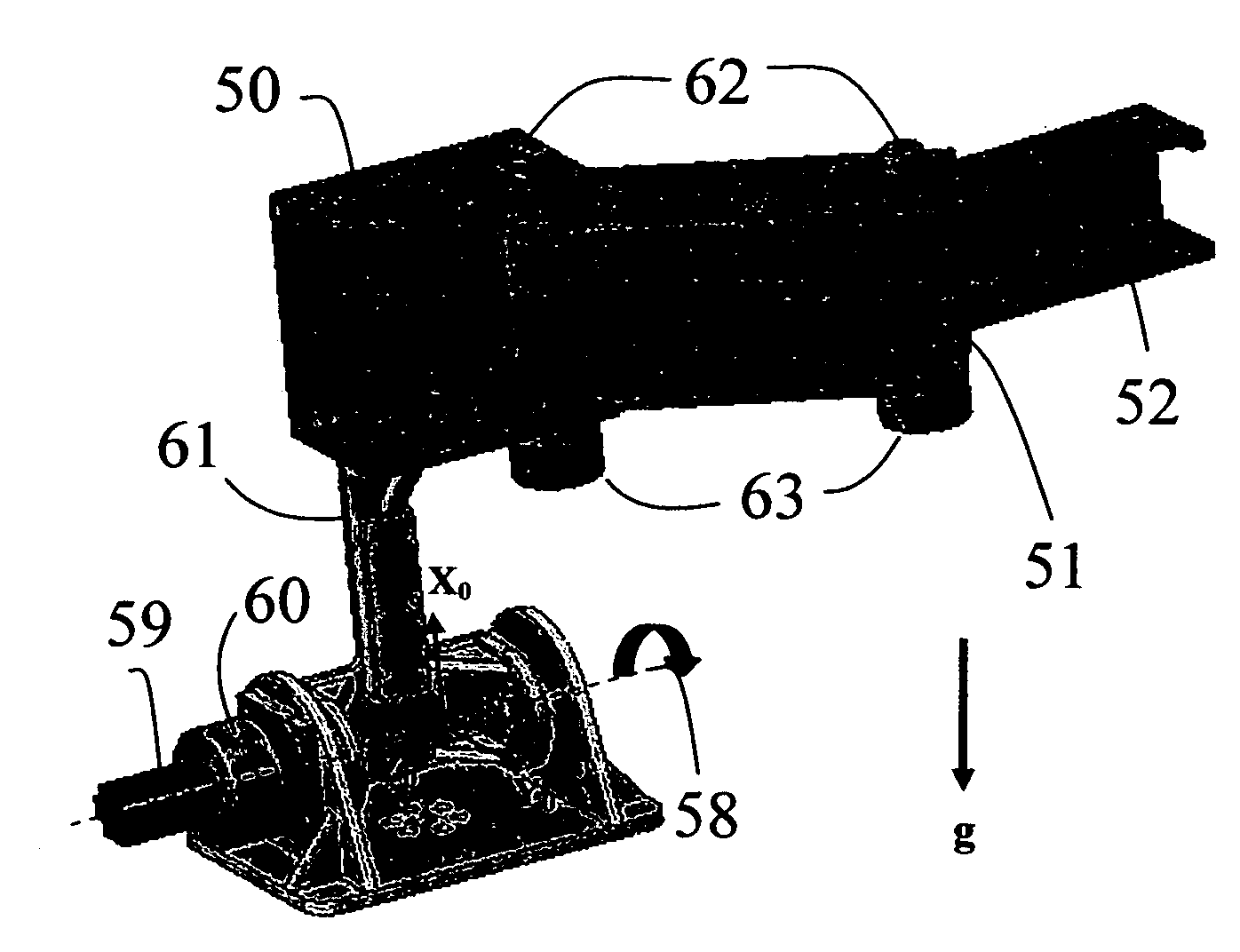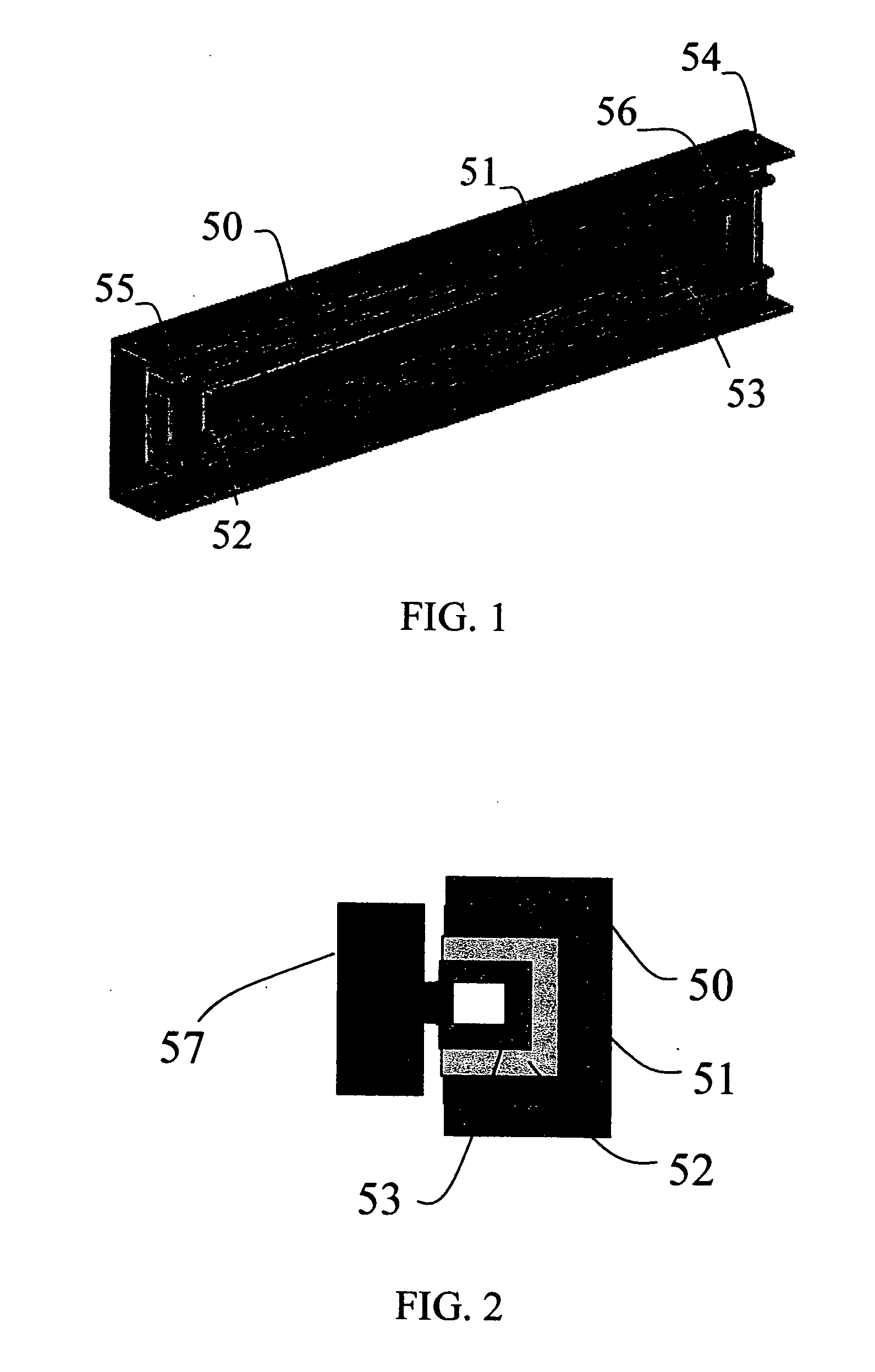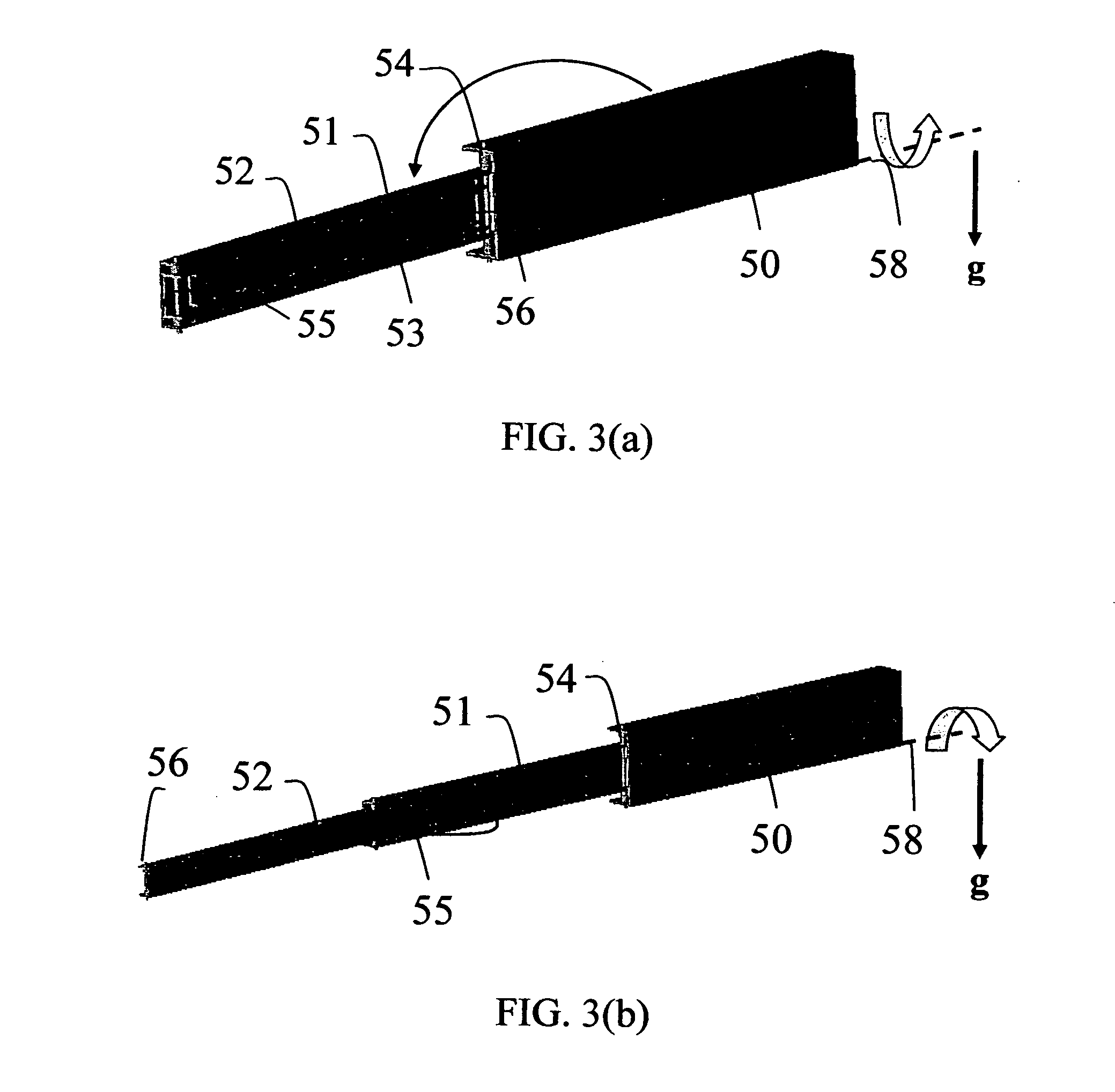Gravity driven underactuated robot arm for assembly operations inside an aircraft wing box
a robotic arm and underactuation technology, applied in the direction of program-controlled manipulators, mechanical control devices, instruments, etc., can solve the problems of low productivity, frequent injuries, and difficult to meet the diverse requirements of the design of the robot arm, and achieve the effect of reducing the number of accidents
- Summary
- Abstract
- Description
- Claims
- Application Information
AI Technical Summary
Problems solved by technology
Method used
Image
Examples
embodiments
[0057]FIG. 5 shows the preferred embodiment of the robot arm with 3 C-links 50-52. A T-link 61 is rigidly connected to link 50. An AC servo motor (with optical encoder) 59 coupled to harmonic drive gearing 60 is used as a backlash free actuation mechanism. This mechanism is used to rotate the T-link 61 and link 50 about axis 58. This embodiment has optical encoders 62 at the free joints for measuring angular positions of the unactuated links 51-52. This embodiment also uses pneumatic brakes 63 as locking mechanisms at the free joints.
[0058]FIG. 10 shows an image of the preferred embodiment of the robot arm with 3 C-links 50-52. The arm is inside a mock-up of an airplane wing box 65. The arm enters the wing box 65 through an access porthole 64. There is also a payload 57 attached to the terminal link 52.
PUM
 Login to View More
Login to View More Abstract
Description
Claims
Application Information
 Login to View More
Login to View More - R&D
- Intellectual Property
- Life Sciences
- Materials
- Tech Scout
- Unparalleled Data Quality
- Higher Quality Content
- 60% Fewer Hallucinations
Browse by: Latest US Patents, China's latest patents, Technical Efficacy Thesaurus, Application Domain, Technology Topic, Popular Technical Reports.
© 2025 PatSnap. All rights reserved.Legal|Privacy policy|Modern Slavery Act Transparency Statement|Sitemap|About US| Contact US: help@patsnap.com



